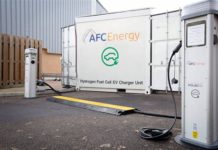Efficient decentralised energy technology such as CHP can allow organisations to build site resilience and combat rising energy costs, yet capex constraints can present issues. Aggreko’s sector team leader for manufacturing Craig Akers explores how temporary CHP solutions can offer companies a route out of a worsening situation.
The state of the UK’s ageing asset base presents a problem to the country’s business community – namely, that it is limiting efforts by individual plant owners and operators to improve the energy efficiency of their respective firms. With energy bills representing between 20 to 25% of a facility’s overall budget, and energy costs rising by 37% on average in the manufacturing sector alone, this issue cannot be understated.
Ambitious, sweeping steps to confront this growing concern are clearly required, but it is possible that the national grid may not be able to maintain the energy supply new solutions may require. Yet with the UK participating in a highly competitive worldwide market, and this ageing asset base hampering companies’ ability to grow and keep pace with their global rivals, it is clear that standing still is not an option.
This situation will only get worse as the grid continues to age, especially when we consider that many companies are also subject to capex constraints around purchasing permanent solutions. Escaping this unenviable and spiralling position is therefore becoming increasingly difficult.
Improving resilience
Decentralised energy solutions offer a way to alleviate these mounting concerns, as they allow companies to generate their own electricity on-site. By adopting such solutions, industry can reduce its current overreliance on the national grid, and sidestep any power resilience concerns that may arise due to ageing energy infrastructure. In fact, this option is growing in profile among UK businesses, with a 2019 survey from Aggreko finding that 49% of companies cited lower energy costs as the main reason behind adopting a decentralised energy solution.
As a result, there is a continuing trend toward adopting decentralised energy solutions as an independent power source that can serve as a backup in case of national grid issues. Consequently, manufacturing, commercial and industrial firms are able to safeguard against costly unplanned downtime while reducing energy costs, enhancing their global competitiveness while also reducing their carbon footprint in line with sustainability and emissions targets.
Finding pathways
Though the benefits of decentralised energy are clear, some companies can find that the pathway to adopting the technology is littered with obstacles. While other organisations have the financial capital to fund permanent installations, not all companies can do this. This is borne out in survey findings from Aggreko, which highlighted that while 43% of respondents had considered decentralised energy solutions, 38% have had an investment for new equipment to reduce energy consumption turned down in the last five years because of capex constraints.
This can leave UK companies in an unappealing situation, where they need to act to reduce energy bills and improve on-site power resilience, but cannot free up the funds to make this happen. With change not possible, these firms can find themselves stuck in rapidly spiralling circumstances, where the need to upgrade to more efficient systems grows, but global competitors, unencumbered by these financial and infrastructure issues, continue to pull away.
CHP – the solution?
Remedial action is clearly required, and businesses can ill-afford to bury their heads in the sand when it comes to safeguarding their future energy supply. Indeed, just because funding for permanent installations is not available for some companies, this does not leave them devoid of options around energy cost reduction. One such option, CHP technology, can eliminate financial and logistical disadvantages, improve site power resilience and allow for operational efficiency gains.
Otherwise known as cogeneration, CHP is a method of electricity generation which involves utilising vast quantities of otherwise wasted heat created by conventional power plants. As a method of on-site electricity generation, it also reduces the pressure on our already-strained national grid and remove stress about the instability of consistent energy provision.
Crucially, CHP installations also create hot water and steam by harnessing this otherwise wasted by-product and repurposing it for processing applications. By doing so, they significantly reduce wasted energy and ensure businesses are, quite literally, not throwing money away. Additionally, because heat and power are provided from one source, emissions can be lowered by up to 30%, enabling businesses to better hit sustainability targets.
Bridging the gap
A CHP system is clearly a substantial outlay, yet by hiring it as a ‘bridging gap’ solution, plant owners and operators can enjoy this innovative technology’s benefits without being hamstrung by unaffordable up-front costs. This provides an off-balance sheet option with no requirement for depreciation of tangible assets. In addition to this, hire solutions also come with maintenance capability. Because a third-party team handles product optimisation, ongoing maintenance and remedial action should issues occur, hiring companies can be assured of its continued reliability as an energy source.
The prohibitive capital investment required for such solutions mean businesses may not see returns for years, which, depending on their financial position, is time they may not have. However, CHP packages can offer up to 40% in savings for regular business energy bills when compared to importing power from the grid. In turn, long-term hire options could therefore let companies compete and give them the opportunity to build up the capital required for a permanent plant solution.
Capex constraints show no sign of easing, meaning businesses need to find innovative ways of combatting rising energy costs and site resilience issues caused by an ageing national grid. As an efficient and cost-effective means of providing consistent onsite energy, the temporary hire of CHP technology represents an excellent way of doing exactly this.
For those ready to take the next step, but unsure of the options available, there are many incentives available, such as Good Quality CHP under the Combined Heat and Power Quality Assure Programme. l


